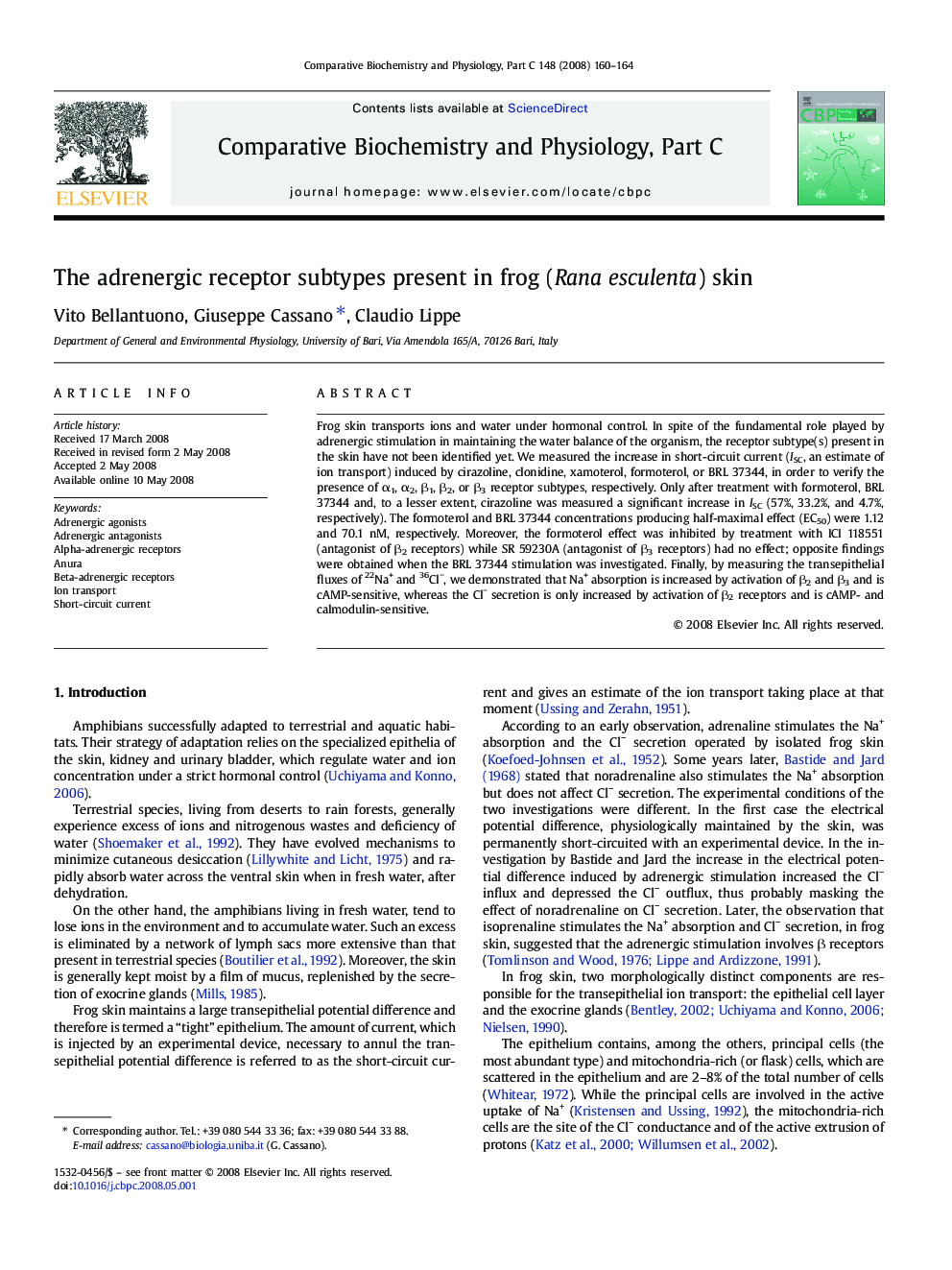| Article ID | Journal | Published Year | Pages | File Type |
|---|---|---|---|---|
| 1977591 | Comparative Biochemistry and Physiology Part C: Toxicology & Pharmacology | 2008 | 5 Pages |
Abstract
Frog skin transports ions and water under hormonal control. In spite of the fundamental role played by adrenergic stimulation in maintaining the water balance of the organism, the receptor subtype(s) present in the skin have not been identified yet. We measured the increase in short-circuit current (ISC, an estimate of ion transport) induced by cirazoline, clonidine, xamoterol, formoterol, or BRL 37344, in order to verify the presence of α1, α2, β1, β2, or β3 receptor subtypes, respectively. Only after treatment with formoterol, BRL 37344 and, to a lesser extent, cirazoline was measured a significant increase in ISC (57%, 33.2%, and 4.7%, respectively). The formoterol and BRL 37344 concentrations producing half-maximal effect (EC50) were 1.12 and 70.1 nM, respectively. Moreover, the formoterol effect was inhibited by treatment with ICI 118551 (antagonist of β2 receptors) while SR 59230A (antagonist of β3 receptors) had no effect; opposite findings were obtained when the BRL 37344 stimulation was investigated. Finally, by measuring the transepithelial fluxes of 22Na+ and 36Clâ, we demonstrated that Na+ absorption is increased by activation of β2 and β3 and is cAMP-sensitive, whereas the Clâ secretion is only increased by activation of β2 receptors and is cAMP- and calmodulin-sensitive.
Keywords
Related Topics
Life Sciences
Biochemistry, Genetics and Molecular Biology
Biochemistry
Authors
Vito Bellantuono, Giuseppe Cassano, Claudio Lippe,
